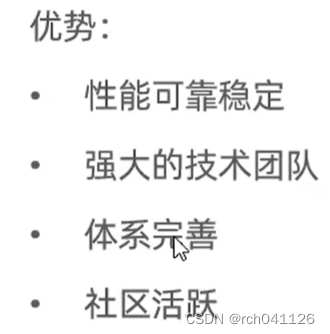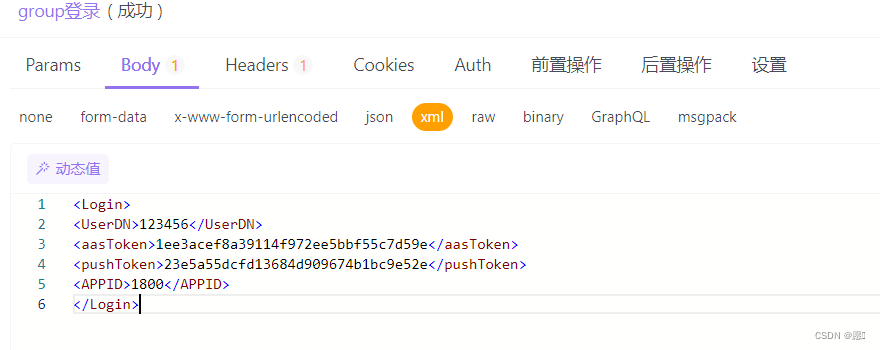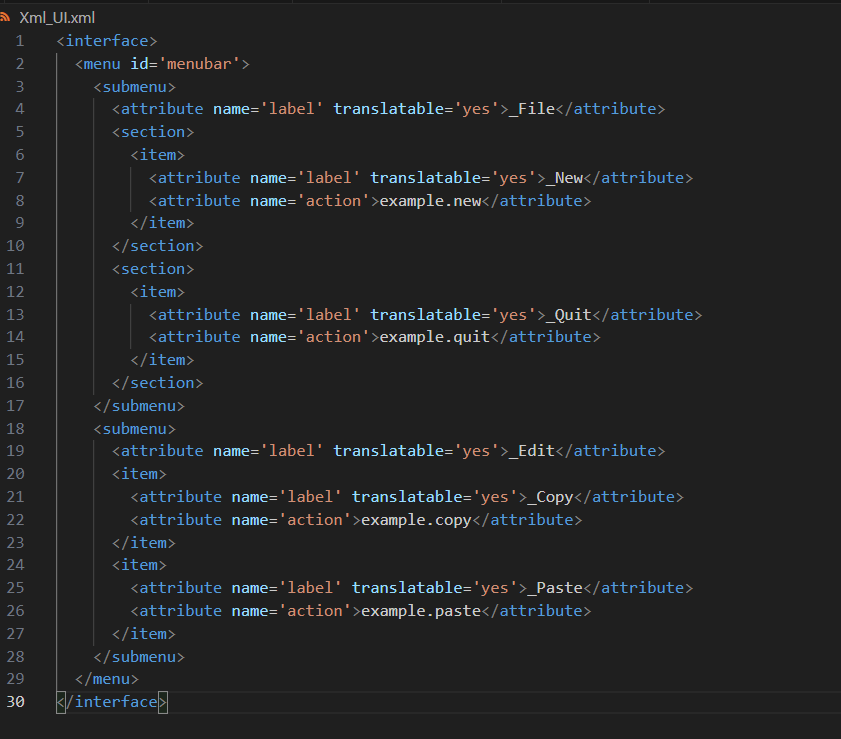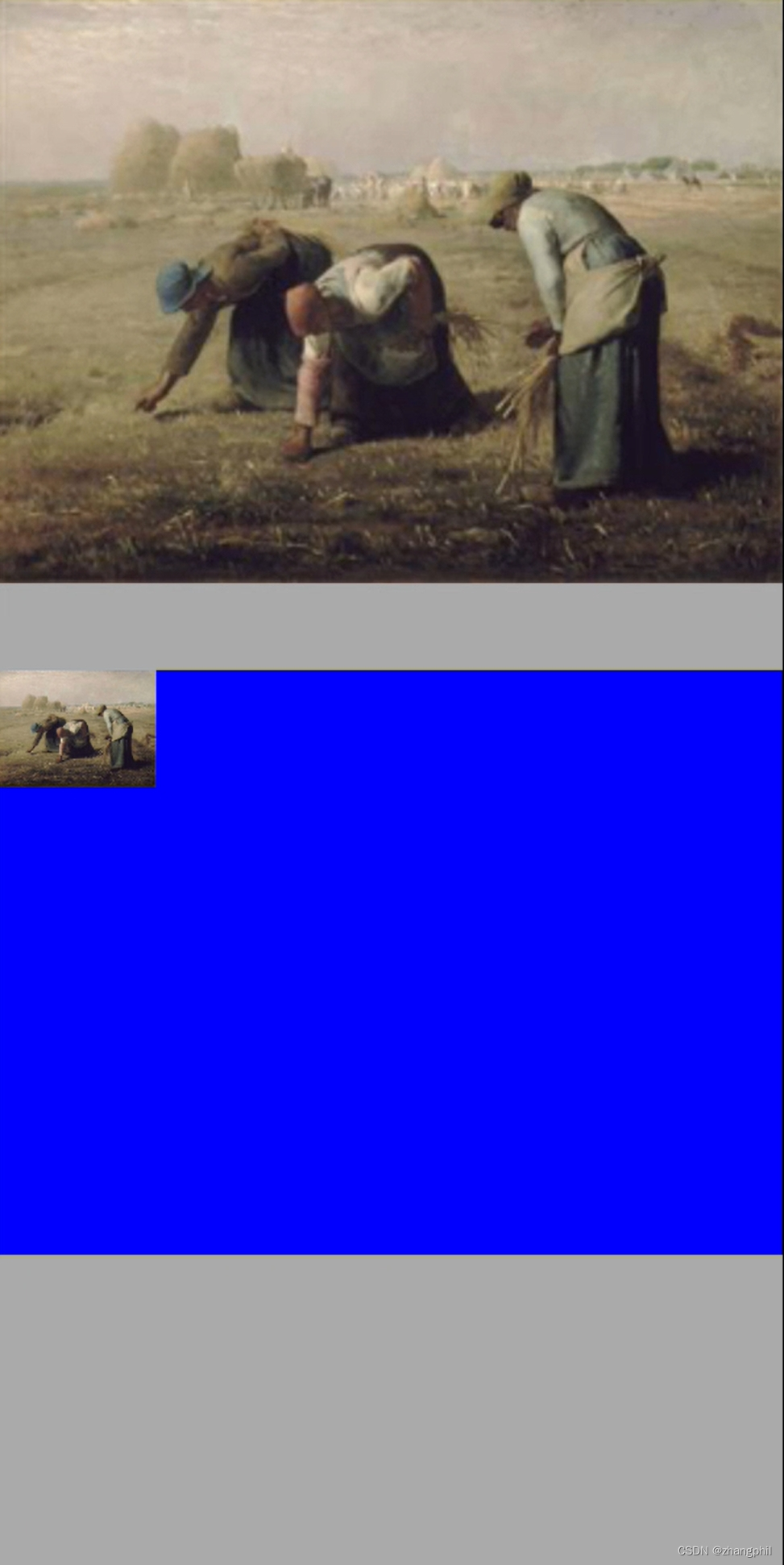前言-关于StateListDrawable
Android里面经常会在开发中在res/drawable目录下, 使用shape或者selector编写XML文件, 来定制一些View的背景, 而这些XML最终会转换为StateListDrawable
*注: 并非所有的XML都是StateListDrawable*
对于StateListDrawable文档中如此描述:
允许您将多个图形图像分配给单个 Drawable,并通过字符串 ID 值替换可见项。它可以在带有 元素的 XML 文件中定义。每个状态 Drawable 都在嵌套的 元素中定义.
常见的XML
<?xml version="1.0" encoding="UTF-8"?>
<selector xmlns:android="http://schemas.android.com/apk/res/android">
<item android:state_enabled="false"
android:drawable="@drawable/btn_off" />
<item android:state_pressed="true"
android:state_enabled="true"
android:drawable="@drawable/btn_off" />
<item android:state_focused="true"
android:state_enabled="true"
android:drawable="@drawable/btn_on" />
<item android:state_enabled="true"
android:drawable="@drawable/btn_on" />
</selector>
<selector xmlns:android="http://schemas.android.com/apk/res/android">
<item android:state_pressed="true" >
<shape>
<solid
android:color="#3498DB" />
<stroke
android:width="1dp"
android:color="#2980B9" />
<corners
android:radius="0dp" />
<padding
android:left="12dp"
android:top="12dp"
android:right="12dp"
android:bottom="12dp" />
</shape>
</item>
<item>
<shape>
<solid
android:color="#2980B9" />
<stroke
android:width="1dp"
android:color="#2980B9" />
<corners
android:radius="0dp" />
<padding
android:left="12dp"
android:top="12dp"
android:right="12dp"
android:bottom="12dp" />
</shape>
</item>
</selector>
通过代码创建StateListDrawable1
注意注释: 注意该处的顺序,只要有一个状态与之相配,背景就会被换掉
private StateListDrawable addStateDrawable(Context context, int idNormal, int idPressed, int idFocused) {
StateListDrawable sd = new StateListDrawable();
Drawable normal = idNormal == -1 ? null : context.getResources().getDrawable(idNormal)
Drawable press(略);Drawable focus(略);
//注意该处的顺序,只要有一个状态与之相配,背景就会被换掉
//所以不要把大范围放在前面了,如果sd.addState(new[]{},normal)放在第一个的话,就没有q 什么效果了
sd.addState(new int[]{android.R.attr.state_enabled, android.R.attr.state_focused}, focus);
sd.addState(new int[]{android.R.attr.state_pressed, android.R.attr.state_enabled}, pressed);
sd.addState(new int[]{android.R.attr.state_focused}, focus);
sd.addState(new int[]{android.R.attr.state_pressed}, pressed);
sd.addState(new int[]{android.R.attr.state_enabled}, normal);
sd.addState(new int[]{}, normal);
return sd;
}
动态修改背景 2
StateListDrawable mySelectorGrad = (StateListDrawable)view.getBackground();
try {
Class slDraClass = StateListDrawable.class;
Method getStateCountMethod = slDraClass.getDeclaredMethod("getStateCount", new Class[0]);
Method getStateSetMethod = slDraClass.getDeclaredMethod("getStateSet", int.class);
Method getDrawableMethod = slDraClass.getDeclaredMethod("getStateDrawable", int.class);
int count = (Integer) getStateCountMethod.invoke(mySelectorGrad, new Object[]{});//对应item标签
Log.d(TAG, "state count ="+count);
for(int i=0;i < count;i++) {
int[] stateSet = (int[]) getStateSetMethod.invoke(mySelectorGrad, i);//对应item标签中的 android:state_xxxx
if (stateSet == null || stateSet.length == 0) {
Log.d(TAG, "state is null");
GradientDrawable drawable = (GradientDrawable) getDrawableMethod.invoke(mySelectorGrad, i);//这就是你要获得的Enabled为false时候的drawable
drawable.setColor(Color.parseColor(checkColor));
} else {
for (int j = 0; j < stateSet.length; j++) {
Log.d(TAG, "state =" + stateSet[j]);
Drawable drawable = (Drawable) getDrawableMethod.invoke(mySelectorGrad, i);//这就是你要获得的Enabled为false时候的drawable
}
}
}
} catch (NoSuchMethodException e) {
e.printStackTrace();
} catch (InvocationTargetException e) {
e.printStackTrace();
} catch (IllegalAccessException e) {
e.printStackTrace();
}
在上面的代码基础修改下, 丰富函数,满足更多的状态, 更换背景颜色:
public static void updateDrawableColor(Drawable drawable, int newColor) {
updateDrawableColor(drawable, state_default, newColor);
}
//https://www.cnblogs.com/whycxb/p/7256109.html
//改变默认无状态背景
//targetState为-1时代表修改默认状态,对应stateSet为空的状态
public static void updateDrawableColor(Drawable drawable, int targetState, int newColor) {
if(drawable == null)return;
if(!(drawable instanceof StateListDrawable)){
return;
}
StateListDrawable mySelectorGrad = (StateListDrawable) drawable;
try {
Method getStateCount = StateListDrawable.class.getDeclaredMethod("getStateCount");
Method getStateSet = StateListDrawable.class.getDeclaredMethod("getStateSet", int.class);
Method getDrawable = StateListDrawable.class.getDeclaredMethod("getStateDrawable", int.class);
Object val = getStateCount.invoke(mySelectorGrad);//对应item标签;
if(val == null){
return;
}
int count = (Integer) val;
//Logger.d("UiTools", "count=" + count);
for (int i = 0; i < count; i++) {
int[] stateSet = (int[]) getStateSet.invoke(mySelectorGrad, i);//对应item标签中的 android:state_xxxx
boolean stateEmpty = stateSet == null || stateSet.length == 0;
//一个item 存在 0个或多个 state_XXXX
if (targetState == -1){//改变默认状态
if(stateEmpty) {
//默认无任何状态的<item>
GradientDrawable gd = (GradientDrawable) getDrawable.invoke(mySelectorGrad, i);//这就是你要获得的Enabled为false时候的drawable
if(gd != null)gd.setColor(newColor);
}
}else if(!stateEmpty){//改定指定状态
for(int s : stateSet){
if(s == targetState){
Drawable d = (Drawable)getDrawable.invoke(mySelectorGrad, i);
if(d instanceof GradientDrawable) {
GradientDrawable gd = (GradientDrawable)d;
gd.setColor(newColor);
}else{
//Logger.w("UiTools", "updateDrawableColor: not GradientDrawable");
}
}
}
}
}
} catch (Exception e) {
e.printStackTrace();
}
}
从View的background跟踪StateListDrawable的由来
public View(Context context, @Nullable AttributeSet attrs, int defStyleAttr, int defStyleRes) {
this(context);
mSourceLayoutId = Resources.getAttributeSetSourceResId(attrs);
final TypedArray a = context.obtainStyledAttributes(
attrs, com.android.internal.R.styleable.View, defStyleAttr, defStyleRes);
//...
final int N = a.getIndexCount();
for (int i = 0; i < N; i++) {
int attr = a.getIndex(i);
switch (attr) {
case com.android.internal.R.styleable.View_background:
background = a.getDrawable(attr);
break;
//...
}
if (background != null) {
setBackground(background);
}
}
frameworks/base/core/java/android/content/res/TypedArray.java
@Nullable
public Drawable getDrawable(@StyleableRes int index) {
return getDrawableForDensity(index, 0);
}
/**
* Version of {@link #getDrawable(int)} that accepts an override density.
* @hide
*/
@Nullable
public Drawable getDrawableForDensity(@StyleableRes int index, int density) {
if (mRecycled) {
throw new RuntimeException("Cannot make calls to a recycled instance!");
}
final TypedValue value = mValue;
if (getValueAt(index * STYLE_NUM_ENTRIES, value)) {
if (value.type == TypedValue.TYPE_ATTRIBUTE) {
throw new UnsupportedOperationException(
"Failed to resolve attribute at index " + index + ": " + value);
}
if (density > 0) {
// If the density is overridden, the value in the TypedArray will not reflect this.
// Do a separate lookup of the resourceId with the density override.
mResources.getValueForDensity(value.resourceId, density, value, true);
}
return mResources.loadDrawable(value, value.resourceId, density, mTheme);
}
return null;
}
frameworks/base/core/java/android/content/res/Resources.java
@NonNull
@UnsupportedAppUsage
Drawable loadDrawable(@NonNull TypedValue value, int id, int density, @Nullable Theme theme)
throws NotFoundException {
return mResourcesImpl.loadDrawable(this, value, id, density, theme);
}
frameworks/base/core/java/android/content/res/ResourcesImpl.java
@Nullable
Drawable loadDrawable(@NonNull Resources wrapper, @NonNull TypedValue value, int id,
int density, @Nullable Resources.Theme theme)
throws NotFoundException {
// If the drawable's XML lives in our current density qualifier,
// it's okay to use a scaled version from the cache. Otherwise, we
// need to actually load the drawable from XML.
final boolean useCache = density == 0 || value.density == mMetrics.densityDpi;
// Pretend the requested density is actually the display density. If
// the drawable returned is not the requested density, then force it
// to be scaled later by dividing its density by the ratio of
// requested density to actual device density. Drawables that have
// undefined density or no density don't need to be handled here.
if (density > 0 && value.density > 0 && value.density != TypedValue.DENSITY_NONE) {
if (value.density == density) {
value.density = mMetrics.densityDpi;
} else {
value.density = (value.density * mMetrics.densityDpi) / density;
}
}
try {
if (TRACE_FOR_PRELOAD) {
// Log only framework resources
if ((id >>> 24) == 0x1) {
final String name = getResourceName(id);
if (name != null) {
Log.d("PreloadDrawable", name);
}
}
}
final boolean isColorDrawable;
final DrawableCache caches;
final long key;
if (value.type >= TypedValue.TYPE_FIRST_COLOR_INT
&& value.type <= TypedValue.TYPE_LAST_COLOR_INT) {
isColorDrawable = true;
caches = mColorDrawableCache;
key = value.data;
} else {
isColorDrawable = false;
caches = mDrawableCache;
key = (((long) value.assetCookie) << 32) | value.data;
}
// First, check whether we have a cached version of this drawable
// that was inflated against the specified theme. Skip the cache if
// we're currently preloading or we're not using the cache.
if (!mPreloading && useCache) {
final Drawable cachedDrawable = caches.getInstance(key, wrapper, theme);
if (cachedDrawable != null) {
cachedDrawable.setChangingConfigurations(value.changingConfigurations);
return cachedDrawable;
}
}
// Next, check preloaded drawables. Preloaded drawables may contain
// unresolved theme attributes.
final Drawable.ConstantState cs;
if (isColorDrawable) {
cs = sPreloadedColorDrawables.get(key);
} else {
cs = sPreloadedDrawables[mConfiguration.getLayoutDirection()].get(key);
}
Drawable dr;
boolean needsNewDrawableAfterCache = false;
if (cs != null) {
if (TRACE_FOR_DETAILED_PRELOAD) {
// Log only framework resources
if (((id >>> 24) == 0x1) && (android.os.Process.myUid() != 0)) {
final String name = getResourceName(id);
if (name != null) {
Log.d(TAG_PRELOAD, "Hit preloaded FW drawable #"
+ Integer.toHexString(id) + " " + name);
}
}
}
dr = cs.newDrawable(wrapper);
} else if (isColorDrawable) {
dr = new ColorDrawable(value.data);
} else {
dr = loadDrawableForCookie(wrapper, value, id, density);
}
// DrawableContainer' constant state has drawables instances. In order to leave the
// constant state intact in the cache, we need to create a new DrawableContainer after
// added to cache.
if (dr instanceof DrawableContainer) {
needsNewDrawableAfterCache = true;
}
// Determine if the drawable has unresolved theme attributes. If it
// does, we'll need to apply a theme and store it in a theme-specific
// cache.
final boolean canApplyTheme = dr != null && dr.canApplyTheme();
if (canApplyTheme && theme != null) {
dr = dr.mutate();
dr.applyTheme(theme);
dr.clearMutated();
}
// If we were able to obtain a drawable, store it in the appropriate
// cache: preload, not themed, null theme, or theme-specific. Don't
// pollute the cache with drawables loaded from a foreign density.
if (dr != null) {
dr.setChangingConfigurations(value.changingConfigurations);
if (useCache) {
cacheDrawable(value, isColorDrawable, caches, theme, canApplyTheme, key, dr);
if (needsNewDrawableAfterCache) {
Drawable.ConstantState state = dr.getConstantState();
if (state != null) {
dr = state.newDrawable(wrapper);
}
}
}
}
return dr;
} catch (Exception e) {
String name;
try {
name = getResourceName(id);
} catch (NotFoundException e2) {
name = "(missing name)";
}
// The target drawable might fail to load for any number of
// reasons, but we always want to include the resource name.
// Since the client already expects this method to throw a
// NotFoundException, just throw one of those.
final NotFoundException nfe = new NotFoundException("Drawable " + name
+ " with resource ID #0x" + Integer.toHexString(id), e);
nfe.setStackTrace(new StackTraceElement[0]);
throw nfe;
}
}
关于mDrawableCache有关的注释:
// First, check whether we have a cached version of this drawable
// that was inflated against the specified theme. Skip the cache if
// we’re currently preloading or we’re not using the cache.
这是一个缓冲区, 加载过的Drawable放存放在里面, 在取时会先检测是否已存在.
/**
* Loads a drawable from XML or resources stream.
*
* @return Drawable, or null if Drawable cannot be decoded.
*/
@Nullable
private Drawable loadDrawableForCookie(@NonNull Resources wrapper, @NonNull TypedValue value,
int id, int density) {
//...
try {
if (file.endsWith(".xml")) {
final String typeName = getResourceTypeName(id);
if (typeName != null && typeName.equals("color")) {
dr = loadColorOrXmlDrawable(wrapper, value, id, density, file);
} else {
dr = loadXmlDrawable(wrapper, value, id, density, file);
}
} else {
final InputStream is = mAssets.openNonAsset(
value.assetCookie, file, AssetManager.ACCESS_STREAMING);
final AssetInputStream ais = (AssetInputStream) is;
dr = decodeImageDrawable(ais, wrapper, value);
}
} finally {
stack.pop();
}
} catch (Exception | StackOverflowError e) {
Trace.traceEnd(Trace.TRACE_TAG_RESOURCES);
final NotFoundException rnf = new NotFoundException(
"File " + file + " from drawable resource ID #0x" + Integer.toHexString(id));
rnf.initCause(e);
throw rnf;
}
//...
return dr;
}
如果是XML:
frameworks/base/graphics/java/android/graphics/drawable/DrawableInflater.java
/**
* Version of {@link #inflateFromXml(String, XmlPullParser, AttributeSet, Theme)} that accepts
* an override density.
*/
@NonNull
Drawable inflateFromXmlForDensity(@NonNull String name, @NonNull XmlPullParser parser,
@NonNull AttributeSet attrs, int density, @Nullable Theme theme)
throws XmlPullParserException, IOException {
// Inner classes must be referenced as Outer$Inner, but XML tag names
// can't contain $, so the <drawable> tag allows developers to specify
// the class in an attribute. We'll still run it through inflateFromTag
// to stay consistent with how LayoutInflater works.
if (name.equals("drawable")) {
name = attrs.getAttributeValue(null, "class");
if (name == null) {
throw new InflateException("<drawable> tag must specify class attribute");
}
}
Drawable drawable = inflateFromTag(name);
if (drawable == null) {
drawable = inflateFromClass(name);
}
drawable.setSrcDensityOverride(density);
drawable.inflate(mRes, parser, attrs, theme);
return drawable;
}
@NonNull
@SuppressWarnings("deprecation")
private Drawable inflateFromTag(@NonNull String name) {
switch (name) {
case "selector":
return new StateListDrawable();
case "animated-selector":
return new AnimatedStateListDrawable();
case "level-list":
return new LevelListDrawable();
case "layer-list":
return new LayerDrawable();
case "transition":
return new TransitionDrawable();
case "ripple":
return new RippleDrawable();
case "adaptive-icon":
return new AdaptiveIconDrawable();
case "color":
return new ColorDrawable();
case "shape":
return new GradientDrawable();
case "vector":
return new VectorDrawable();
case "animated-vector":
return new AnimatedVectorDrawable();
case "scale":
return new ScaleDrawable();
case "clip":
return new ClipDrawable();
case "rotate":
return new RotateDrawable();
case "animated-rotate":
return new AnimatedRotateDrawable();
case "animation-list":
return new AnimationDrawable();
case "inset":
return new InsetDrawable();
case "bitmap":
return new BitmapDrawable();
case "nine-patch":
return new NinePatchDrawable();
case "animated-image":
return new AnimatedImageDrawable();
default:
return null;
}
}
frameworks/base/graphics/java/android/graphics/ImageDecoder.java
@WorkerThread
@NonNull
private static Drawable decodeDrawableImpl(@NonNull Source src,
@Nullable OnHeaderDecodedListener listener) throws IOException {
//....
return new BitmapDrawable(res, bm);
}
参考
StateListDrawable
Set android shape color programmatically
Android: How to create a StateListDrawable programmatically
How to change colors of a Drawable in Android?
原文地址:https://blog.csdn.net/ansondroider/article/details/123740337
本文来自互联网用户投稿,该文观点仅代表作者本人,不代表本站立场。本站仅提供信息存储空间服务,不拥有所有权,不承担相关法律责任。
如若转载,请注明出处:http://www.7code.cn/show_17705.html
如若内容造成侵权/违法违规/事实不符,请联系代码007邮箱:suwngjj01@126.com进行投诉反馈,一经查实,立即删除!






